The arrival of 207 Squadron will now see all training on F-35 conducted in the UK.
Since 2013 Royal Air Force and Royal Navy personnel had trained alongside US Marine Corps counterparts at Marine Corps Air Station Beaufort in the US, say the MoD.
Minister for the Armed Forces Mark Lancaster said in a news release:
“The arrival of 207 Squadron represents another milestone in the progress of this world-beating aircraft.
As we welcome 207 Squadron home from our US allies, the transatlantic military relationship continues to be the strongest and deepest of any two nations in the world.”
Air Chief Marshal Sir Stephen Hillier, Chief of the Air Staff, said:
“I was delighted to see the second squadron of the most advanced and dynamic fighter jet in our history arrive today at RAF Marham.
Being able to train our pilots in the UK is another great leap in our sovereign capability and will ensure the Royal Air Force and Royal Navy can train our pilots to fight and win with these extraordinary jets, which will sit at the heart of our country’s globally deployable forces.”
Wing Commander Scott Williams, Officer Commanding 207 Squadron said:
“After experiencing the excellent training offered by our US allies and achieving a good level of experience and knowledge across our instructors, the time is now right to move 207 Squadron from the USA to the UK.
We are thoroughly looking forward to being based at RAF Marham and training our F-35 pilots here in the UK.”
Six aircraft aircraft took the 10-hour flight from MCAS Beaufort in South Carolina.
207 Squadron will formally stand up on 1 August 2019 and the first F-35 pilot course at RAF Marham is due to commence in early-September.


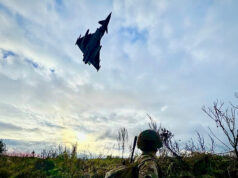
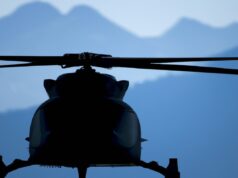
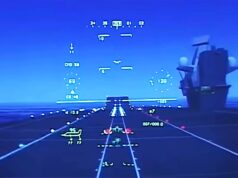
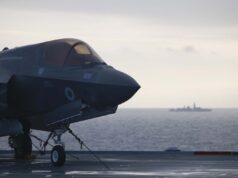

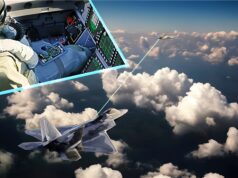
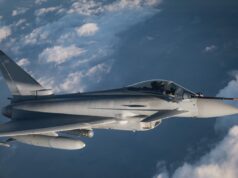
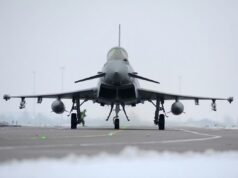
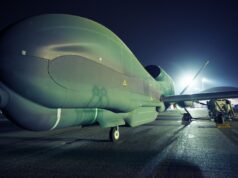


So including the deployment to Cyprus (6 Jets I believe)… How many UK based F35B do we now have available?
This arrival bring the number of UK based aircraft to 15. It’s worth noting that the jets deployed to Cyprus have now returned, although 2 were on exercise with the Italian Air Force.
Hi Lusty. Any idea when British aircraft will be embarking HMS QE?
Hey, Geoff. Soon is the answer! HMS Queen Elizabeth will deploy for Westlant 19 along with HMS Dragon. Aircraft from 17 sqn and 617 sqn are set to embark.
Likely we’ll also see her with an RFA vessel, probably Fort Vic or a Tide.
Looking forward! Cheers.
Me too! No problem.
and a ssn in tow
if the iranians keep up with all their pushing it to the edge, it will be very soon, hms illustrious was commissioned on the way to the falklands,with the ‘bomb shop’ filled and the ‘birds in the nest Q.E will be good to go
Welcome news, but wish the procurement process was expedited
I would tend to agree. I mean we have 9 front line jets and 6 in the OCU? What do they expect the rate of attrition in the pilots to be? From my perspective we could move 3 into the front line and still be able to replace 25% of the pilots per course.
What is your perspective
Do you train fast jet pilots
Of course you train fast jet pilots however the OCU isn’t training fast jet pilots. It’s training fast jet pilots to operate the platform. If we already have a fully staffed front line squadron having 6 jets in the OCU at a time when we only have 9 front line jets appears to the casual observer to be a massive misalignment of resources.
Having 3 for teaching pilots how to operate the platform and having 12 front line jets seems a much more sensible approach and you add 3 more aircraft to the OCU whenever you stand up 12 more front line jets.
If your average OCU course is about one year (and I don’t have the exact course length but the new CO of the OCU first flew the plane in December [7 months]) having 6 OCU seats for 9 front line seats says you expect to have a turn over of 66% of your operational pilots per year….
if it’s about 6-7 months as the training period for the man in command of the trainers indicates then you are expecting 150% of your front line pilots to turn over per year!
Really? I mean surely 25% is a more realistic representation unless there is a far deeper malaise there than anyone realises.
I’d be happy to know if someone has a better explanation because it’s not readily apparent with the procurement rate for additional airframes
I’d guess the 6 OCU covers training for both front-line squadrons.
6 (OCU) + 12 (617RAF) + 12 (809NAS) = 30
30 x 1.5 (sustainment) = 45
45 + 3 (OEU) = 48
Basically, 617 isn’t at full strength yet.
I have to add that OCU’s aren’t given Sqn numbers for show. 207 can and are prepared to become a battlefront unit art any time
Bit of a daft question, but why was this squadron number resurected as opposed to any of the other dormant ones, is it because this was previously a training squadron?
Looking on wikipedia, there seems no rhyme or reason in regards to RAF squadrons. they seem to form and disband quicker that a “very, very” quick thing. The question should be, based on my only having served in the Army, what happens to all the Sqn silver when a Sqn disbands, or don’t they have any and it just comes from a central pool in Cranwell ?
207 squadron was a RNAS unit in WW1, as the F35 fleet is joint RAF-RN it is a relevant number to use as the Lightning OCU. I’m not sure how much ‘silver’ RAF squadrons have as most are only 100 and bit years old.
There are lots of reasons why squadrons disband and reform on a regular(ish) basis. Defence cuts being one of them, new equipment being another. Example: 9 Squadron disbanded in march this year as a Tornado operator at RAF Marham and then reformed a few weeks(?) later as a Typhoon squadron at Lossiemouth.
In the early 90’s 56 squadron (Phantoms) disbanded, due to defence cuts, it then reformed as the Tornado F3 OCU. I believe there is some form of ‘seniority ‘ among squadrons with those having the longest periods of service being more senior and therefore more likely to be kept in service. 617 is a special case because of its wartime fame.
It’d be nice to see 19 Sqn stood up as the next RAF F35 Squadron.
23 Sqn, 201 Sqn and 216 Sqn are being stood up again soon.
23 are the RAF’s first space sqn, 216 have just been stood up as the RAF’s first ‘Drone swarm sqn’ both in July
Another “special case” Markt is 120 Squadron. The unit formed relatively late – in 1918. But with about 14 U-Boat “kills” in WW2, it was the highest-scoring maritime patrol squadron. It’s scheduled to reform on the Poseidon later this year.
Those RAF 200 series squadrons (before 01/04/1918, the Royal Naval Air Service units) are often overlooked, but they include some of the oldest military flying formations in the world.
For instance, 201 Squadron (also with a maritime patrol background, also soon to reform on the Poseidon), formerly No.1 RNAS, was established as early as October 1914. It has a distinguished history – one of its pilots, Warneford VC, bringing down Zeppelin LZ.37 during 1915.
The RNAS is often forgotten in the history of the RAF, but its members played a very influential role in the early days of the new service – doctrinal, basing (Cranwell is an old RNAS station), and even rank structure.
Wing Commander, Group Captain, Air Commodore etc – all display the Royal Air Force’s RNAS lineage. So good to see No.7 RNAS back in 2019!
I did not know that history on the 200 series Alan.
I have learnt something there. Thank you.
Much appreciated, Daniele.
Each sqn has a connection to what it does, it will also be a rotor to make each Sqn is not stood down too long. As for 207, it is not the connection to the navy that the number was chosen. The unit was kitted out with the Boeing Washington bombers (RAF designation for the B-29). In fact, there never was a 207 in the navy, they were 7, but as the AAC already had handed over 7 to the RAF the ‘2’ and ‘0’ were put in front, as with 208 and the likes. Each OCU has to be operationally ready as much as an Sqn as from the late 80’s early 90’s.
So it is the bomber and US aircraft use, that the fact they have been stood down for so long. Although I would like to have seen a more historic Sqn getting a flying title such as 111, or 56, or if you want to have a bomber sqn given the role 74, or 57… 56 and 57 are nothing more than office-based units for some reason
When Sqn’s disband their memorabilia goes into storage, I’m not sure where. I do remember helping the Harrier guys from 4 Sqn pack up the silver, models etc before they became a different Sqn complete with new silverware. The standard goes to the St Clement Danes church in London.
I’d read of Cranwell involved in disbandments?
Standards are only laid up in St. Clement Danes if the RAF don’t expect to reform the squadron anytime soon. Once a standard has been laid up in a church, when reforming a squadron you’d need a new standard as you can’t reuse one that’s been laid up in a church.
With squadrons that the RAF think they might reform in the not so distant future, the standards are housed under the rotunda of the RAF College Cranwell for reuse.
Ah! Interesting. Thank you. Anyone know who’s under there?!
All items, ‘gizzits’ and trophies that are not passed on when someone else wins it, are packed away and kept in Cranwell, the standard flies over the great hall in Cranwell
Usually, it is a tenuous link between what the sqn has done and what role it carries out now. The bomber sqns remain bomber, but some of these have become transport. Air defence usually remains air defence.
do we know how many tankers were used for the transit? was this an identical plan to that of last year when 617 arrived in 2 batches? also, do we know if all 6 aircraft are for 207 or is 617 being topped-up to full strength (10-12 aircraft?)
I believe all 6 are for 207.
There’s no point buying more than the minimum number of F35B at this point as these are still early production models that will need a stack of expensive fixes and retrofits in their (potentially quite short) fatigue lives.
By contrast the planes that roll off the line in a couple of years time will be cheaper, more technically mature, more reliable, and longer lived.
It’s also likely the MoD are hoping for a stinger £/$ ratio before they sign the next big order. That may or may not happen but it also influences the thinking right now.
*stronger £/$ ratio….with this bunch in charge; the crass absurdity of Brexit, a possible general election and Bozo vs Jezzer as PM! The only place the £ is going is down the pan!
There must be a finite number per week/month that LM can make as well I would imagine… along with the other partners. And there is a finite number of pilots and aircrew to train at any one time as well. So the available aircraft have to be spread out. As least Turkey won’t be a problem any more. With any luck our spies (Kerim Bey, Station T) will be able to capture the secrets of the S400 as well!!
*stronger £/$ ratio
Since when has 15 jets made up 2 squadrons?
A lot of the pilot and crew training for the F-35, is done on simulators, nowadays.
Including A new simulator centre built at Marham, a large building. The 207 OCU will most likely have only 5/6 F-35Bs.
how many make a squadron?
good question especially as the numbers for a squadron is 12-24 aircraft
The steadfast alliance between the two great nations of the United States of America and Great Britain continues to grow strong. As an American, I am very pleased to have the U.K. as our strongest ally. God Bless these two great nations.
????
Go USA from a Brit. Im proud of the work the UK/US is doing together long may it continue. We are entering a new phase in the world and now more than ever we must stick together.
shame about trump, you have my condolences
?
steadfast? i wouldn’t trust the americans as far as i could throw them all they want from the u.k is £££